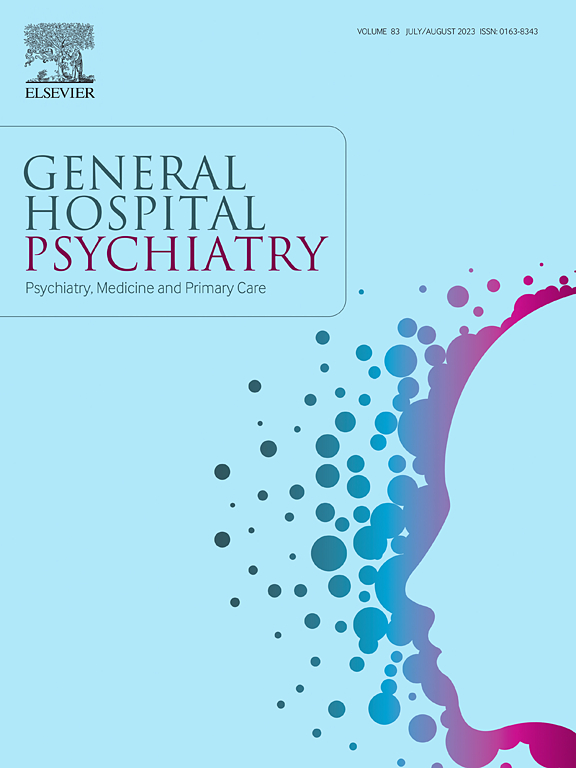The schizo-obsessive spectrum: Mapping clinical phenotypes, neurobiological mechanisms, and treatment considerations in first-episode psychosis - An updated systematic review
IF 3.7
2区 医学
Q1 PSYCHIATRY
引用次数: 0
Abstract
Objectives
Obsessive-compulsive symptoms (OCS) represent a prevalent comorbidity in first-episode psychosis (FEP) with significant implications for clinical presentation and treatment outcomes. This systematic review examines OCS prevalence, clinical characteristics, neurobiological correlates, and treatment approaches in FEP populations.
Methods
Following PRISMA guidelines, we searched PubMed, Embase, PsycINFO, Web of Science, and Cochrane databases from inception to May 2025. Studies examining OCS in FEP patients (≤5 years from first episode) were included. Meta-analysis used random-effects models with Freeman-Tukey transformation. Quality assessment employed Newcastle-Ottawa Scale and Cochrane Risk of Bias Tool.
Results
Twenty-one studies encompassing 3989 participants were included. Meta-analysis revealed clinically significant OCS in 26.8 % (95 % CI: 18.2–37.1 %) of FEP patients and formal OCD diagnosis in 8.3 % (95 % CI: 6.1–11.2 %)—representing 3–4 fold elevations versus general population. OCS typically emerged 8–12 months before psychotic symptoms in 65 % of patients. Comorbid OCS patients demonstrated significantly higher positive symptom severity, depression scores, and functional impairment. Neuroimaging identified frontostriatothalamic abnormalities, including reduced orbitofrontal (Cohen's d: 0.48) and anterior cingulate cortex volume (Cohen's d: 0.43). Social cognitive deficits, particularly theory of mind impairments (58.3 % vs 71.2 % accuracy, p = 0.024), were enhanced in OCS patients. Treatment challenges included antipsychotic-induced OCS (38.9 % with clozapine vs 20.1 % olanzapine) and SSRI-related psychotic symptom exacerbation (16.7 %).
Conclusions
OCS affect one in four FEP patients, supporting a distinct “schizo-obsessive” subtype with specific neurobiological abnormalities and treatment considerations. Routine screening and integrated management protocols are essential for optimizing outcomes.
精神分裂-强迫谱系:首次发作精神病的临床表型、神经生物学机制和治疗考虑-一项最新的系统综述。
目的:强迫症(OCS)是首发精神病(FEP)中一种普遍的合并症,对临床表现和治疗结果有重要影响。本系统综述探讨了FEP人群中OCS的患病率、临床特征、神经生物学相关性和治疗方法。方法:按照PRISMA指南,我们检索了PubMed、Embase、PsycINFO、Web of Science和Cochrane数据库,检索时间从成立到2025年5月。纳入了FEP患者(首次发作后≤5年)OCS的研究。meta分析采用Freeman-Tukey变换的随机效应模型。质量评价采用纽卡斯尔渥太华量表和Cochrane偏倚风险评估工具。结果:21项研究共纳入3989名受试者。荟萃分析显示,26.8% (95% CI: 18.2- 37.1%)的FEP患者有临床意义的OCS, 8.3% (95% CI: 6.1- 11.2%)的患者有正式的OCD诊断,这是普通人群的3-4倍。OCS通常在65%的患者出现精神病症状前8-12个月出现。合并症OCS患者表现出明显更高的阳性症状严重程度、抑郁评分和功能障碍。神经影像学发现额纹状丘脑异常,包括眶额(Cohen’s d: 0.48)和前扣带皮质体积减少(Cohen’s d: 0.43)。社会认知缺陷,特别是心理理论障碍(58.3% vs 71.2%, p = 0.024)在OCS患者中有所增强。治疗挑战包括抗精神病药物引起的OCS(氯氮平38.9% vs奥氮平20.1%)和ssri相关精神病症状加重(16.7%)。结论:OCS影响四分之一的FEP患者,支持独特的“精神分裂-强迫”亚型,具有特定的神经生物学异常和治疗考虑。常规筛查和综合管理方案对于优化结果至关重要。
本文章由计算机程序翻译,如有差异,请以英文原文为准。
求助全文
约1分钟内获得全文
求助全文
来源期刊

General hospital psychiatry
医学-精神病学
CiteScore
9.60
自引率
2.90%
发文量
125
审稿时长
20 days
期刊介绍:
General Hospital Psychiatry explores the many linkages among psychiatry, medicine, and primary care. In emphasizing a biopsychosocial approach to illness and health, the journal provides a forum for professionals with clinical, academic, and research interests in psychiatry''s role in the mainstream of medicine.
 求助内容:
求助内容: 应助结果提醒方式:
应助结果提醒方式:


